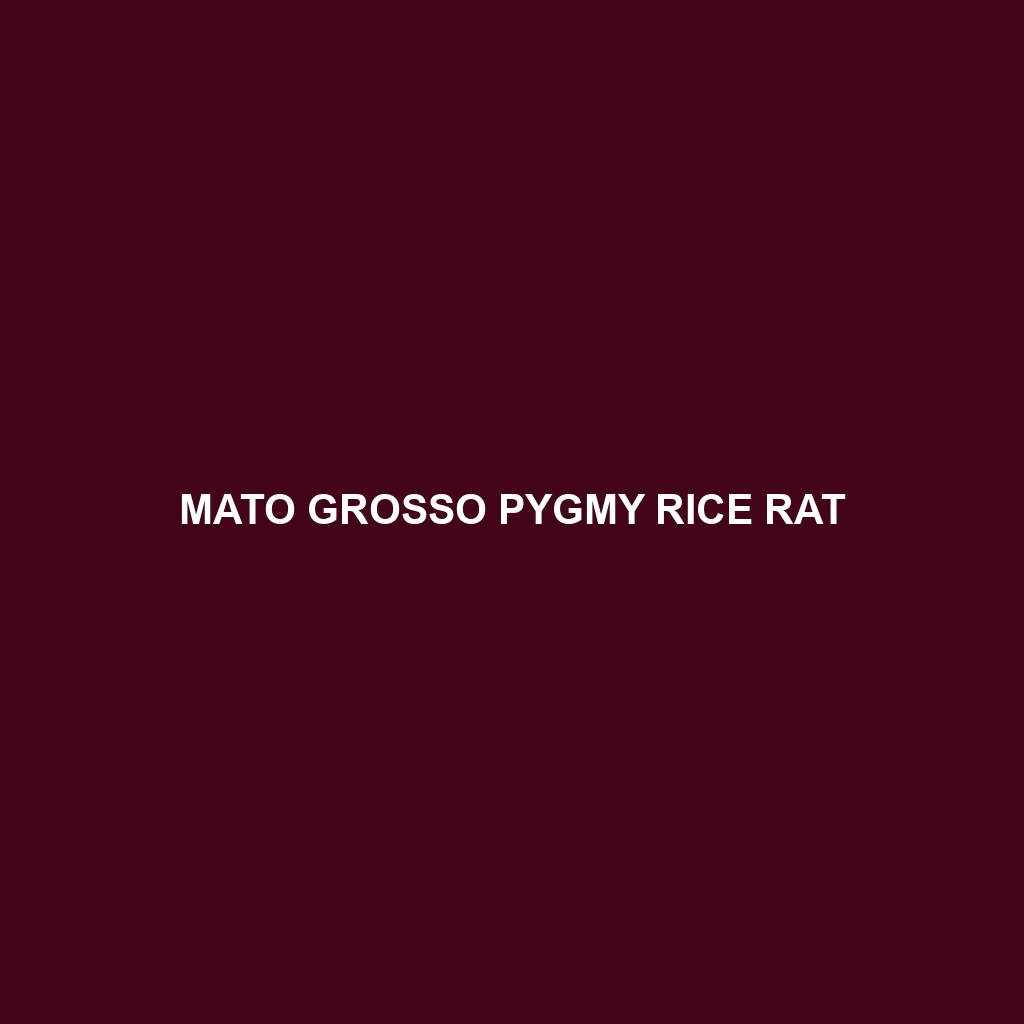Mato Grosso Pygmy Rice Rat
Common Name: Mato Grosso Pygmy Rice Rat
Scientific Name: Oligoryzomys microtis
Habitat
The Mato Grosso Pygmy Rice Rat is primarily found in the tropical and subtropical forests of South America, particularly in regions such as Brazil, Paraguay, and Bolivia. This species thrives in lowland areas, especially near water bodies like rivers and swamps, where it can find ample cover and food sources.
Physical Characteristics
This small rodent measures around 10 to 15 centimeters in body length, with a tail that is often equal to or slightly longer than its body. The Mato Grosso Pygmy Rice Rat is characterized by its soft, short fur, which is generally brown or gray with lighter underparts. Distinctive features include large eyes and rounded ears, which enhance its nocturnal activities.
Behavior
Mato Grosso Pygmy Rice Rats are primarily nocturnal, exhibiting high levels of activity during the night. They are known for their agility and are excellent climbers, often foraging in trees as well as on the ground. These rats communicate through a range of vocalizations and also use scent marking to establish territories and attract mates.
Diet
The diet of the Mato Grosso Pygmy Rice Rat mainly consists of seeds, fruits, and aquatic vegetation. They are particularly fond of grains, which they often collect and store in their nests. As opportunistic feeders, they adapt their dietary habits based on the availability of food resources in their environment, making them an integral part of the ecosystem.
Reproduction
The reproductive habits of the Mato Grosso Pygmy Rice Rat involve breeding throughout the year, with peaks often occurring during the wet season. Females typically give birth to 3 to 5 young after a gestation period of about 25 days. The young are born blind and helpless, relying heavily on their mother for care and nourishment during their early weeks of life.
Conservation Status
The Mato Grosso Pygmy Rice Rat is classified as ‘Vulnerable’ according to the IUCN Red List. Habitat loss due to deforestation and agricultural expansion poses significant threats to its population, necessitating conservation efforts to protect their natural habitats and ensure their survival.
Interesting Facts
One fascinating trait of the Mato Grosso Pygmy Rice Rat is its remarkable ability to swim, which it often does to escape predators or reach food sources across water bodies. Additionally, this species is less studied compared to its relatives, making it an intriguing subject for research in mammalogy.
Role in Ecosystem
The Mato Grosso Pygmy Rice Rat plays a vital role in its ecosystem as both a seed disperser and a prey species for various predators such as snakes and birds of prey. By feeding on seeds and fruits, they contribute to the growth of plants, ensuring the health and diversity of their habitats.
